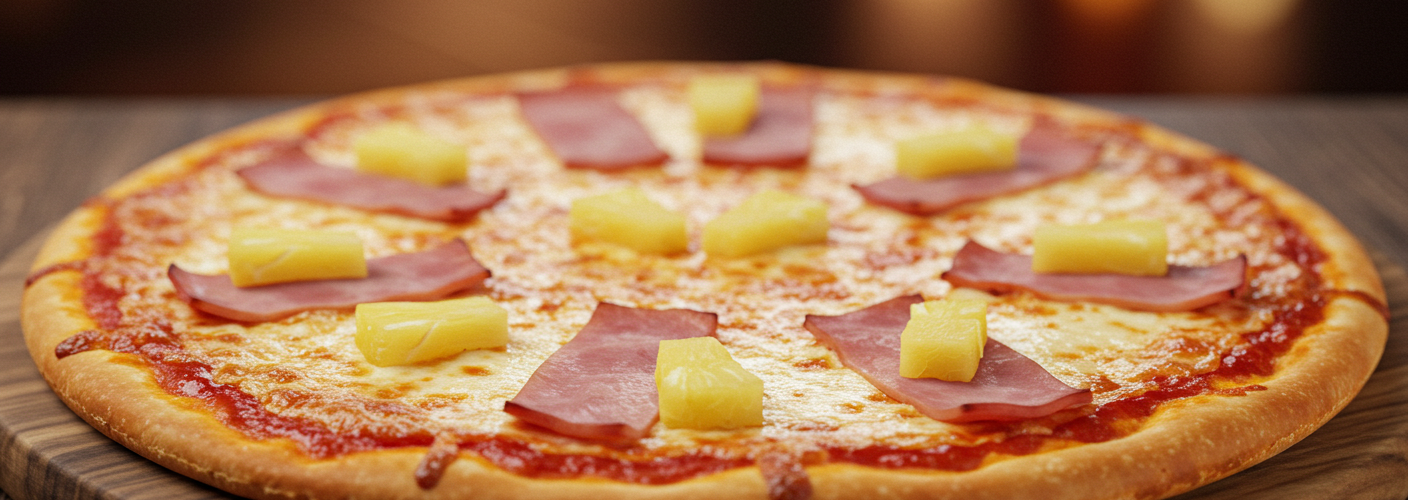If you’ve ever found yourself in a heated debate over pizza toppings, chances are Hawaiian pizza has made its way into the conversation. This unique pizza, topped with tomato sauce, cheese, ham, and the curious addition of pineapple, has sparked passionate discussions among pizza lovers and traditionalists alike. While some embrace its sweet and savory combination, purists may raise an eyebrow at the very notion of fruit on a pizza. However, the Hawaiian pizza has carved out its own space in the culinary landscape, becoming a beloved option for many diners.
The Origins of Hawaiian Pizza
To truly appreciate the Hawaiian pizza, it’s essential to delve into its origin story. Contrary to what its name might suggest, Hawaiian pizza was not born in Hawaii. Instead, it has its roots in Canada, specifically in a pizzeria called “Sam’s Place” in Chatham, Ontario. In 1962, owner Sam Panopoulos, a Greek immigrant, decided to experiment with his menu and added canned pineapple to a traditional cheese and ham pizza. The unique combination quickly garnered attention, and the Hawaiian pizza was born. This unexpected twist took off, leading to its rise in popularity across North America and beyond.
A Flavorful Combination
At its core, the Hawaiian pizza is a delightful blend of flavors and textures. The foundation of tomato sauce and cheese provides a classic pizza base; however, it’s the addition of ham and pineapple that truly sets it apart. The savory, salty bite of the ham contrasts beautifully with the sweet, juicy chunks of pineapple, creating a deliciously balanced taste. For those who enjoy a hint of sweetness with their savory meals, Hawaiian pizza delivers an experience that dances between the two.
In addition to ham, many variations of the Hawaiian pizza include other toppings such as bacon or jalapeños, adding further depth to this beloved dish. It offers a versatile canvas for creativity, making it a customizable choice for diverse palates.
The Great Debate
Despite its popularity, the Hawaiian pizza remains one of the most polarizing pizza choices. Critics argue that pineapple has no place on a pizza, claiming it interferes with the authenticity of traditional Italian cuisine. On the other hand, proponents contest that food is all about experimentation and evolving tastes—what could be more innovative than marrying fruit with a savory dish?
The debate around Hawaiian pizza often extends beyond taste preferences; it touches on cultural identity, culinary traditions, and the evolving nature of food itself. In many ways, the Hawaiian pizza embodies a modernist approach to cooking, where the fusion of flavors reflects our interconnected world.
Conclusion
Whether you adore Hawaiian pizza or staunchly oppose it, there’s no denying that it has made an imprint on the culinary scene. Its unique combination of tomato sauce, cheese, ham, and pineapple invites pizza lovers to step outside their comfort zones and embrace variety. Ultimately, the Hawaiian pizza is about choice, adventure, and a reminder that food can unite us—even over our differences. So the next time you find yourself in a pizza parlor, why not give it a try? You may just discover a new favorite slice.




Add comment